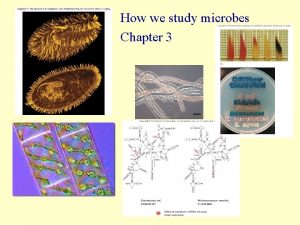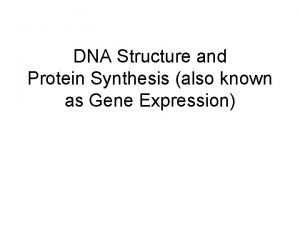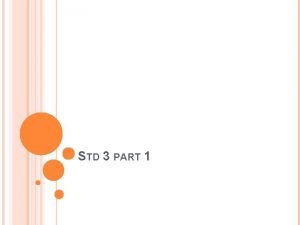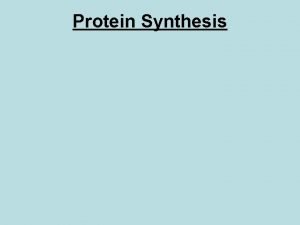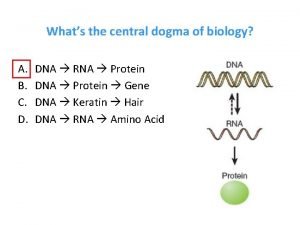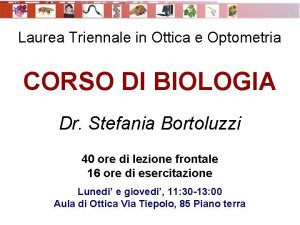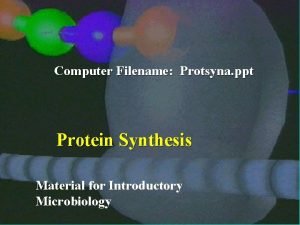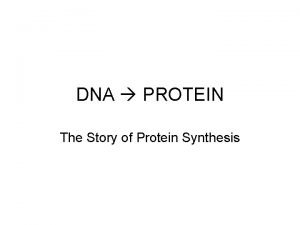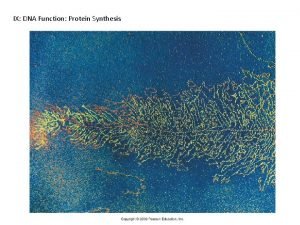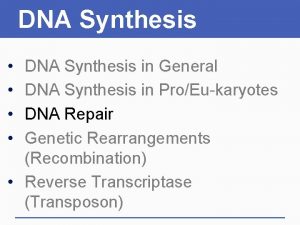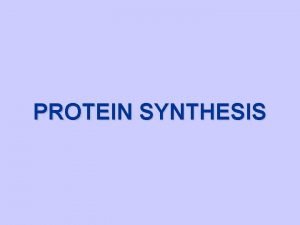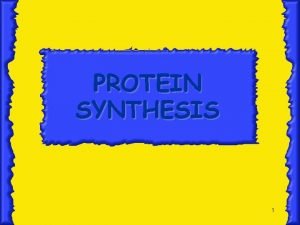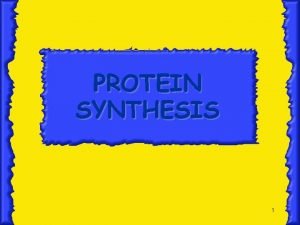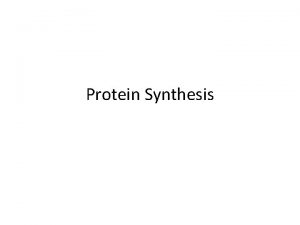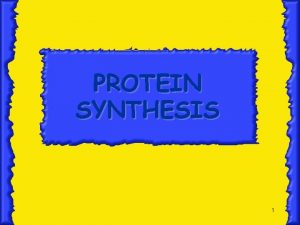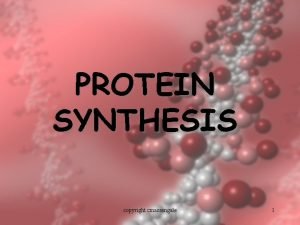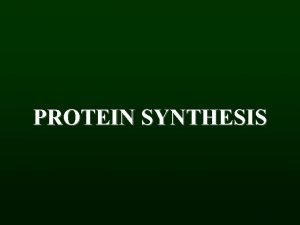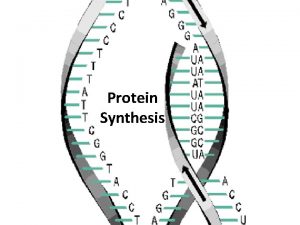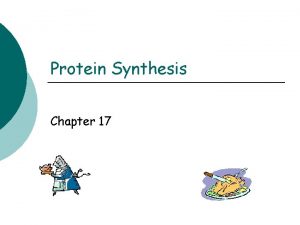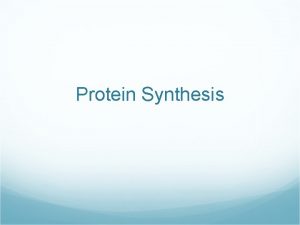Protein Synthesis DNA codes for a Protein DNA

















- Slides: 17

Protein Synthesis

DNA codes for a Protein

DNA vs. RNA: • Thymine (T) switched to Uracil (U) • Single stranded • Sugar is a ribose

Three Kinds of RNA… • m. RNA (messenger RNA) • r. RNA (ribosomal RNA) • t. RNA (transfer RNA)

What’s a protein anyway? • Proteins are large biomolecules made up of amino acids • 2 major kinds: 1) structural – eg. muscle, hair, bone 2) functional – eg. Enzymes, haemoglobin, and antibodies

Functional Proteins • Perform many functions such as: – Speed up chemical reactions that happen in the cell (= enzymes) – transport molecules across membranes – motors (eg. for moving around parts of the cell)


• Amino acids get put together in a long line to form proteins • This line of amino acids then folds up and gives the protein a 3 D shape • There are multiple levels of structure (Bio 12)

How does DNA lead to protein? • Protein Synthesis is made up of two steps • 1) Transcription (DNA -> m. RNA) • 2) Translation (m. RNA -> protein)

• Part 1: Transcription (trans-across, cription-to write) • DNA is only ever found in the nucleus (master blueprints can’t leave) • DNA is copied into a small strand of m. RNA that CAN leave the nucleus

• Part 2: Translation (trans-across, lation-to carry/bring) • m. RNA leaves the nucleus and finds a ribosome in the cytoplasm • A ribosome reads three bases of the m. RNA at a time, and puts the appropriate amino acid in place • These three base “sets” are called codons • A t. RNA (transfer RNA) fetches the amino acid for the ribosome



Can you determine the corresponding amino acids to the RNA codon? CAC: _________ GUA: _________ GCU: _________ AGG: _________ • 20 possible amino acids used to make proteins • 64 possible combinations of codons – This leads to duplication/redundancy – this allows mistakes to be made without preventing the protein from working!

• Let’s practice building a small protein! DNA Triplet m. RNA Codon Amino acid TAC AGA TGT GAA GTG CGG CCT ATT

• Whoops! A random mutation occurred! DNA Triplet m. RNA Codon Amino acid TAC AGA GT GAA GTG CGG CCT ATT

Summary: 1. DNA is copied into m. RNA (transcription) 2. m. RNA leaves the nucleus and finds a ribosome 3. m. RNA codon (triplet) is read and a matching amino acid is added to the chain (translation) (this chain will form a protein)
 Chapter 11 dna and genes
Chapter 11 dna and genes Rna and protein synthesis study guide
Rna and protein synthesis study guide Protein synthesis
Protein synthesis Totipotent cell
Totipotent cell Protein synthesis
Protein synthesis Protein synthesis
Protein synthesis Which best summarizes the process of protein synthesis?
Which best summarizes the process of protein synthesis? Translation or transcription
Translation or transcription Molecular genetics
Molecular genetics Process of protein synthesis
Process of protein synthesis Guac wheel biology
Guac wheel biology Sintese de proteinas na celula
Sintese de proteinas na celula Protein synthesis ppt
Protein synthesis ppt Section 12 3 rna and protein synthesis
Section 12 3 rna and protein synthesis Protein synthesis story
Protein synthesis story Protein synthesis and mutations
Protein synthesis and mutations Protein synthesis
Protein synthesis Transcription and translation bbc bitesize
Transcription and translation bbc bitesize


